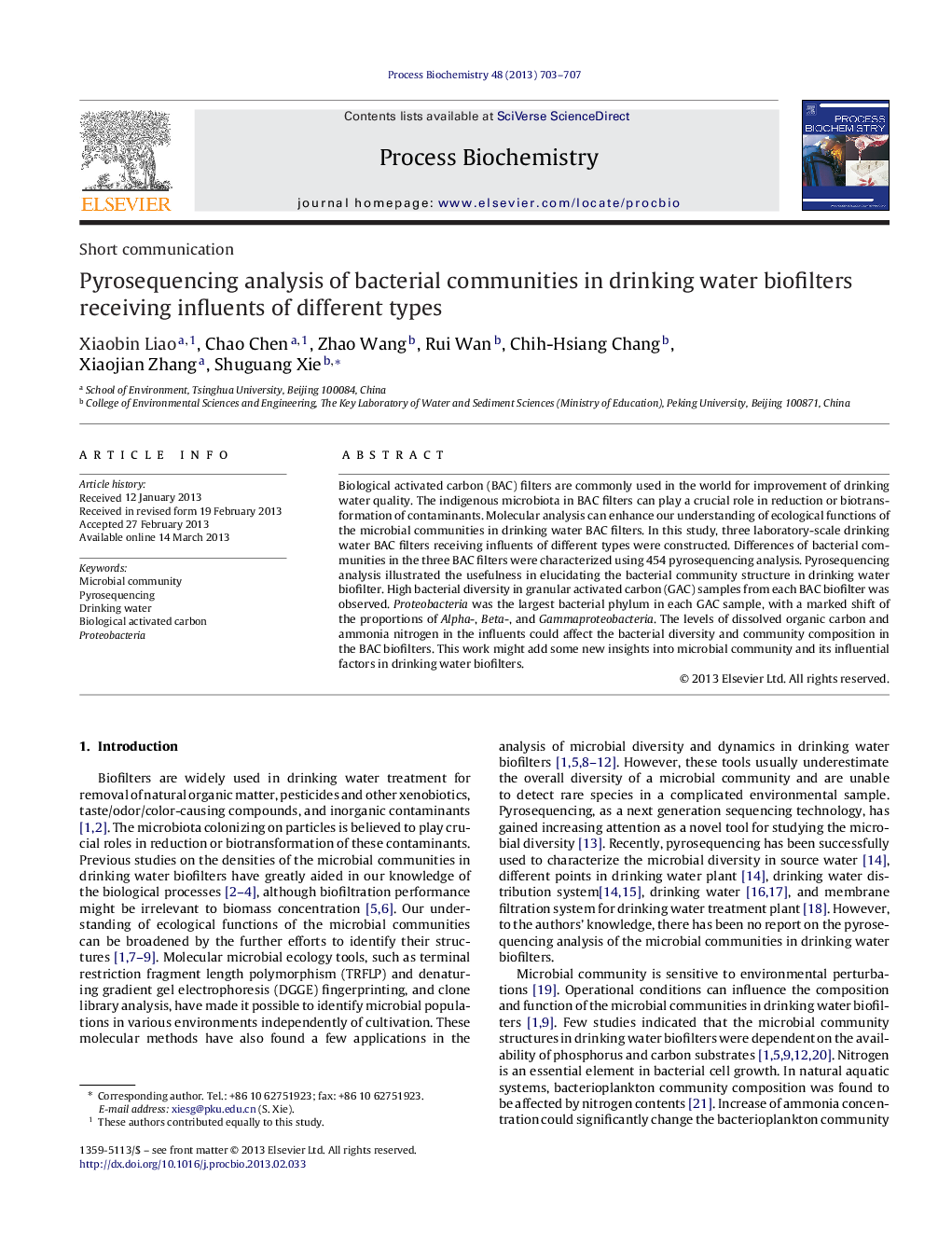| Article ID | Journal | Published Year | Pages | File Type |
|---|---|---|---|---|
| 10235834 | Process Biochemistry | 2013 | 5 Pages |
Abstract
Biological activated carbon (BAC) filters are commonly used in the world for improvement of drinking water quality. The indigenous microbiota in BAC filters can play a crucial role in reduction or biotransformation of contaminants. Molecular analysis can enhance our understanding of ecological functions of the microbial communities in drinking water BAC filters. In this study, three laboratory-scale drinking water BAC filters receiving influents of different types were constructed. Differences of bacterial communities in the three BAC filters were characterized using 454 pyrosequencing analysis. Pyrosequencing analysis illustrated the usefulness in elucidating the bacterial community structure in drinking water biofilter. High bacterial diversity in granular activated carbon (GAC) samples from each BAC biofilter was observed. Proteobacteria was the largest bacterial phylum in each GAC sample, with a marked shift of the proportions of Alpha-, Beta-, and Gammaproteobacteria. The levels of dissolved organic carbon and ammonia nitrogen in the influents could affect the bacterial diversity and community composition in the BAC biofilters. This work might add some new insights into microbial community and its influential factors in drinking water biofilters.
Related Topics
Physical Sciences and Engineering
Chemical Engineering
Bioengineering
Authors
Xiaobin Liao, Chao Chen, Zhao Wang, Rui Wan, Chih-Hsiang Chang, Xiaojian Zhang, Shuguang Xie,
